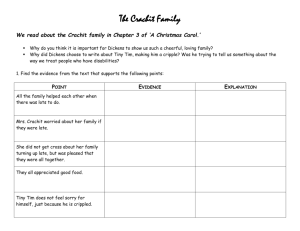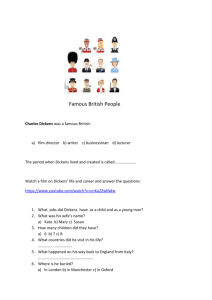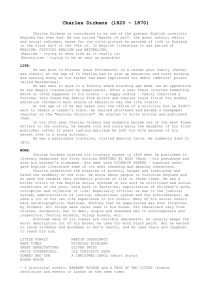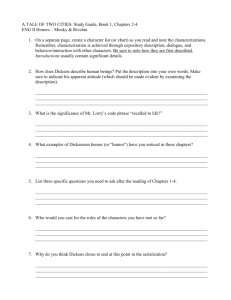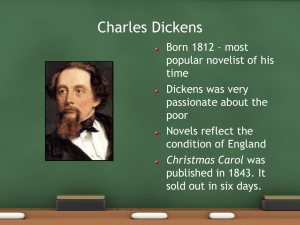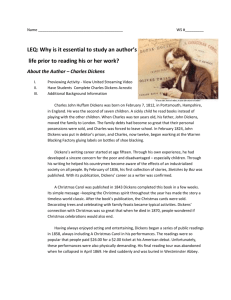charles dickens's “a christmas carol”
advertisement
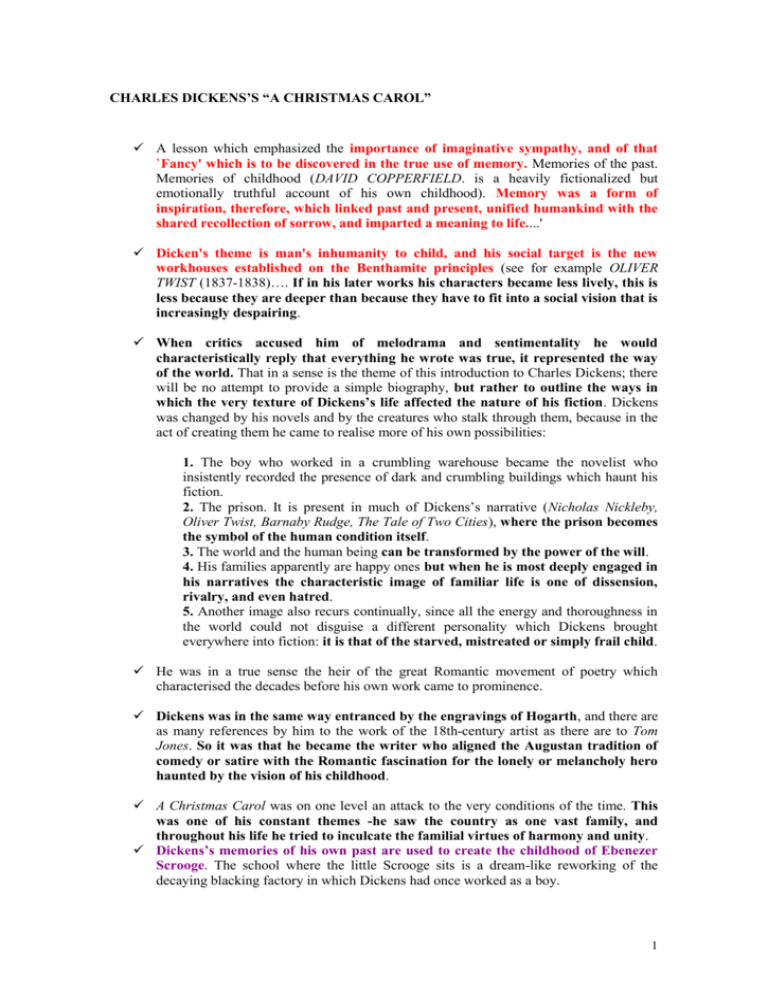
CHARLES DICKENS’S “A CHRISTMAS CAROL” A lesson which emphasized the importance of imaginative sympathy, and of that `Fancy' which is to be discovered in the true use of memory. Memories of the past. Memories of childhood (DAVID COPPERFIELD. is a heavily fictionalized but emotionally truthful account of his own childhood). Memory was a form of inspiration, therefore, which linked past and present, unified humankind with the shared recollection of sorrow, and imparted a meaning to life....' Dicken's theme is man's inhumanity to child, and his social target is the new workhouses established on the Benthamite principles (see for example OLIVER TWIST (1837-1838)…. If in his later works his characters became less lively, this is less because they are deeper than because they have to fit into a social vision that is increasingly despairing. When critics accused him of melodrama and sentimentality he would characteristically reply that everything he wrote was true, it represented the way of the world. That in a sense is the theme of this introduction to Charles Dickens; there will be no attempt to provide a simple biography, but rather to outline the ways in which the very texture of Dickens’s life affected the nature of his fiction. Dickens was changed by his novels and by the creatures who stalk through them, because in the act of creating them he came to realise more of his own possibilities: 1. The boy who worked in a crumbling warehouse became the novelist who insistently recorded the presence of dark and crumbling buildings which haunt his fiction. 2. The prison. It is present in much of Dickens’s narrative (Nicholas Nickleby, Oliver Twist, Barnaby Rudge, The Tale of Two Cities), where the prison becomes the symbol of the human condition itself. 3. The world and the human being can be transformed by the power of the will. 4. His families apparently are happy ones but when he is most deeply engaged in his narratives the characteristic image of familiar life is one of dissension, rivalry, and even hatred. 5. Another image also recurs continually, since all the energy and thoroughness in the world could not disguise a different personality which Dickens brought everywhere into fiction: it is that of the starved, mistreated or simply frail child. He was in a true sense the heir of the great Romantic movement of poetry which characterised the decades before his own work came to prominence. Dickens was in the same way entranced by the engravings of Hogarth, and there are as many references by him to the work of the 18th-century artist as there are to Tom Jones. So it was that he became the writer who aligned the Augustan tradition of comedy or satire with the Romantic fascination for the lonely or melancholy hero haunted by the vision of his childhood. A Christmas Carol was on one level an attack to the very conditions of the time. This was one of his constant themes -he saw the country as one vast family, and throughout his life he tried to inculcate the familial virtues of harmony and unity. Dickens’s memories of his own past are used to create the childhood of Ebenezer Scrooge. The school where the little Scrooge sits is a dream-like reworking of the decaying blacking factory in which Dickens had once worked as a boy. 1 The religious elements of Charity and Mercy are also there, but they are incorporated within the motifs of the fairy tale; for it is in part a religious fable, it is one characterised by the ghosts or spirits which are part of folklore and superstition. The book contained within it all the basic principles of his social philosophy as well as those more private elements running beneath the surface. CITAS – CHARLES DICKENS 1. `... The fusion of different classes, without confusion; In the bringing together of employers and employed; In the creating of a better common understanding among those who depend upon each other, and who can never be in unnatural antagonism without deplorable results...‘ (Charles Dickens). 2. `...Into the relations between employers and employed, as into all the relations of this life, there must enter something of feeling and sentiment; Something of mutual explanation, forbearance and consideration...‘ (Charles Dickens in Household Works) 3. I have endeavoured in this Ghostly little book, to raise the Ghost of an Idea, which shall not put my readers out of humour with themselves, with each other, with the season, or with me. May it haunt their houses pleasantly, and no one wish to lay it. Their faithful Friend and Servant, C. D. December, 1843 (Letter). 2
